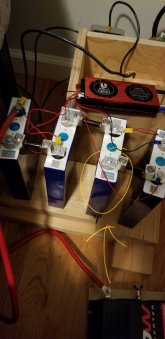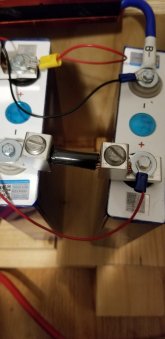I think I have found a $16 solution to my problem.


Copper 110 Flat Bar 1/4" x 1 1/2" x 12"-Long -- .25" x 1 1/2" Copper Bus Bar | eBay
110 Copper Flat Bar 1/4" x 1 1/2" x 12"-Long -->.25" x 1 1/2" Copper Bus Bar.
www.ebay.com




